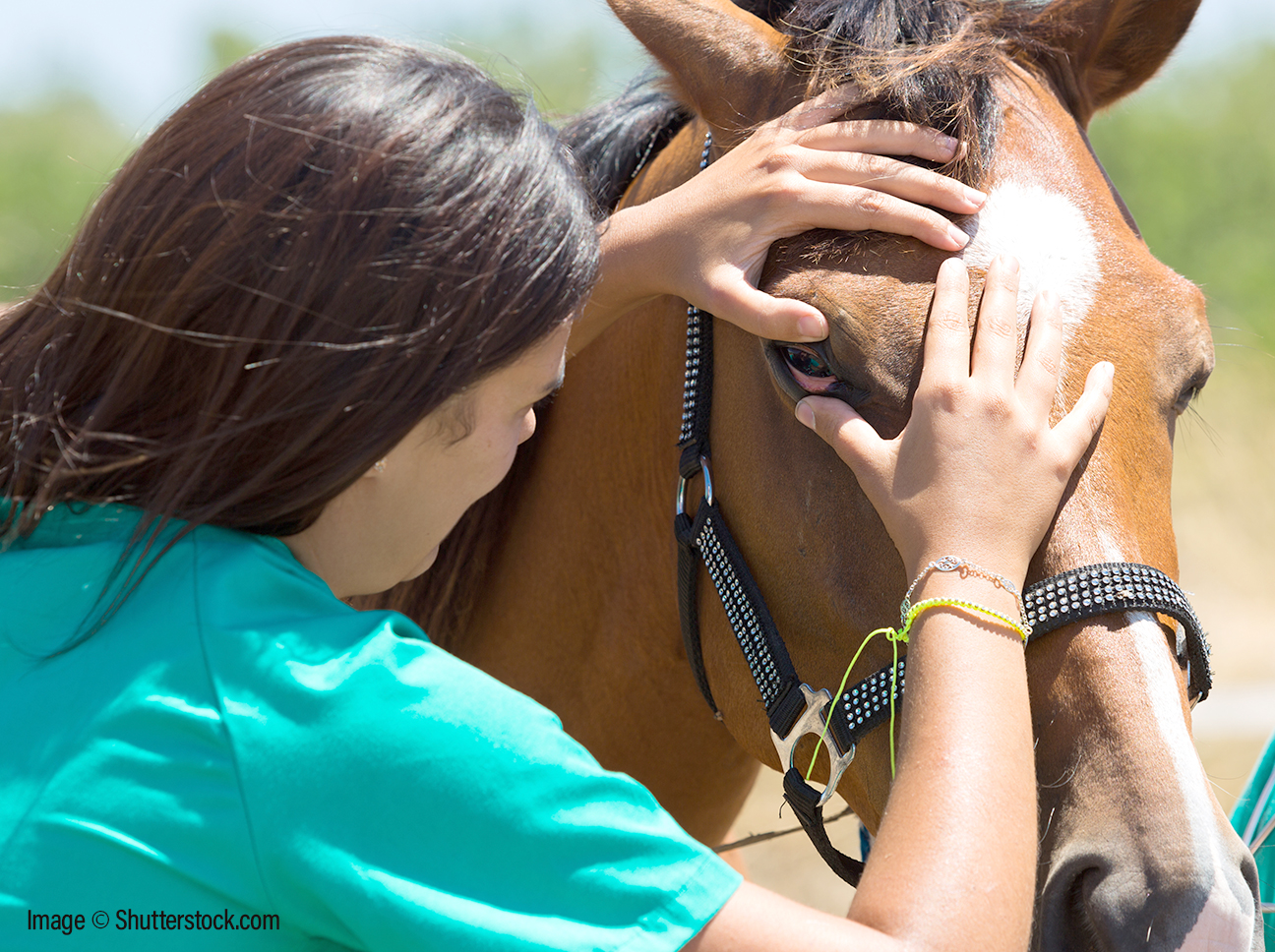Glaucoma is an uncommon eye condition of the horse. In the dog and man, it is extremely painful and very obvious at the onset. However, in the horse the signs can be very subtle, with only intermittent pain, allowing the condition to reach quite an advanced stage, before the true extent of disease is evident.
Glaucoma is an increase in intraocular pressure which means that the inside of the eye is under more tension, and has an increased amount of fluid within it. This stops the eye functioning correctly and often leads to blindness. The condition can happen in one eye or both eyes. Worryingly the horse may only present with a slightly uncomfortable eye for a few days. This may respond to simple non-specific eye drops and sadly give the impression that it is not a serious condition.
Common signs of glaucoma are increased pressure within the eye. This may be visible as a bulging eyeball, but frequently, is only evident by using a special instrument called a tonometer to measure the pressure within the eye, usually done just with the aid of some local anaesthetic applied to the surface of the eye.
Sometimes the horse may have a very slight watery discharge, the eye itself may lose its clear shiny surface and appear slightly opaque or white, and this may be a large area or a subtle stripe. In advanced cases the lens will develop a cataract, and will no longer be clear to look through. Very occasionally the lens may luxate i.e. it will move within the eye.
Horses who are identified early with the condition can maintain their sight and the progress of the disease halted, or in some cases controlled completely with the use of eye drops and regular monitoring. Sometimes drugs are placed in the feed also, to keep the horse comfortable. If the eye condition cannot be controlled, the best option may be to remove the painful eye.
Deben Valley Equine now own their own Tono-Pen which can be used for checking the pressures of the eyes. However, in complicated cases we will also enlist the services of an eye specialist who will have additional equipment or facilities if required.
Last reviewed May 2019
